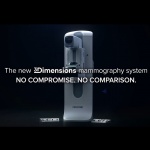
Article • To-Be for tomo
Two-part trial studies tomosynthesis benefits
The UNESCO World Heritage City Bergen is seen as the gateway to the fiords of Norway. However, for radiologists the city offers an even more interesting attraction than Scandinavian landscapes. Bergen features one of the largest randomised control trials to compare digital breast tomosynthesis (DBT) with digital mammography (DM): the To-Be trial. Professor Solveig Hofvind, head of BreastScreen…


























